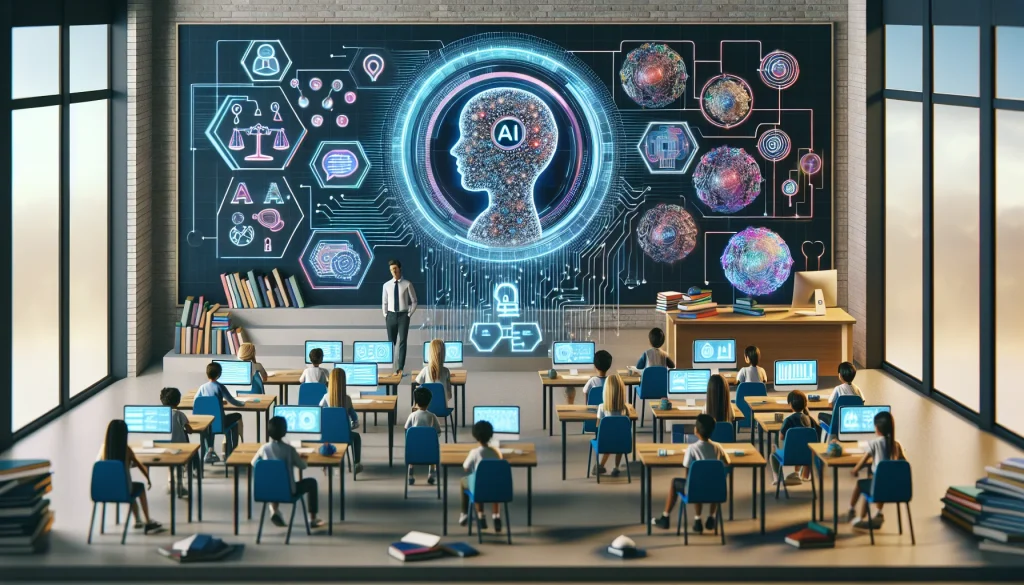
Introduction to Artificial Intelligence
Artificial Intelligence (AI) is a branch of computer science focused on creating systems capable of performing tasks that typically require human intelligence. These tasks can include problem-solving, understanding natural language, recognizing patterns, and making decisions. As educators, understanding the foundational concepts of AI is crucial for integrating these technologies effectively in the classroom.
Key Concepts in AI
1. Definition of AI
AI can be broadly defined as the capability of a machine to imitate intelligent human behavior. This includes various subfields, such as:
- Machine Learning (ML): A subset of AI that enables systems to learn from data and improve their performance over time without being explicitly programmed.
- Natural Language Processing (NLP): This allows machines to understand, interpret, and respond to human language in a valuable way, facilitating communication and interaction.
- Computer Vision: The capability of AI to interpret and process visual information from the world, enabling systems to identify and categorize objects within images and video.
2. Types of AI
AI systems can be categorized based on their capabilities:
-
Narrow AI: Systems designed to perform a specific task, such as facial recognition or language translation. Most AI applications in education, like personalized learning platforms or grading software, are examples of narrow AI.
-
General AI: A theoretical form of AI that would possess the ability to perform any intellectual task that a human can do. Currently, this level of AI does not exist.
3. How AI Works
AI systems typically operate based on algorithms, which are sets of rules or instructions. These algorithms process input data to produce output results. Key processes include:
- Data Collection: Gathering large datasets that AI systems will use to learn and make predictions.
- Training: Using data to train AI models. For example, machine learning models are trained through examples to recognize patterns or make decisions.
- Evaluation: Testing how well the AI performs on new, unseen data to ensure it can generalize its learning.
4. AI in Education
AI has numerous applications in educational settings, such as:
- Personalized Learning: AI can tailor educational experiences to meet the individual needs of students, adjusting content and pacing based on performance.
- Administrative Automation: AI can streamline administrative tasks like grading, scheduling, and resource allocation, allowing educators to focus more on teaching.
- Tutoring Systems: Intelligent tutoring systems can provide students with real-time feedback and support, enhancing their learning experience.
5. Ethical Considerations
As AI technologies become more prevalent in education, it is essential to consider the ethical implications, including:
- Data Privacy: Ensuring the protection of student data used to train AI systems.
- Bias and Fairness: Addressing potential biases in AI algorithms that could affect student outcomes and ensuring equitable access to AI resources.
- Transparency and Accountability: Understanding how AI systems make decisions and who is responsible for their outcomes.
6. Integration Methods
To effectively integrate AI into educational practices, educators can adopt the following methods:
- Professional Development: Participating in training workshops focused on AI technologies and their applications in education.
- Collaboration with Tech Experts: Working alongside technologists and AI developers to understand the capabilities and limitations of AI in education.
- Pilot Programs: Implementing small-scale AI projects to evaluate their effectiveness before broader adoption.
Conclusion
Understanding basic AI concepts is fundamental for educators as they navigate the evolving landscape of technology in education. By grasping these foundational elements, educators can better implement AI tools and ensure that they enhance rather than hinder the learning experience. As the EU AI Regulation progresses, staying informed about these concepts will empower educators to make ethical, informed decisions regarding the use of AI in their classrooms.

